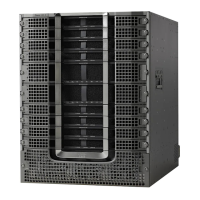PurposeCommand or Action
Exits global configuration mode and returns to privileged
EXEC mode.
end
Example:
Router(config)# end
Step 7
Example:
Router#
Enabling Usage-based Billing Feature File Mode Using SNMP Commands
This section describes how to enable and configure the Usage-based Billing feature so that it operates in file
mode and writes the billing record files to a local file system. The billing application must then log into the
Cisco CMTS and retrieve the billing record files on a regular basis.
To configure the Cisco CMTS for Usage-based Billing feature in file mode, you must set a number of objects
in the CISCO-CABLE-METERING-MIB.
In addition, to include information about deleted service flows in the billing records (supported for DOCSIS
1.1 service flows), you must enable the logging of deleted service flows, using the cable sflog global
configuration command.
Table 25: SNMP Objects to be Configured for File Mode
DescriptionTypeObject
Enables or disables the Usage-based Billing
feature. The valid values are:
• 1—none. The Usage-based Billing
feature is disabled (default).
• 2—local. The Usage-based Billing
feature is enabled and configured for
file mode.
• 3—stream. The Usage-based Billing
feature is enabled and configured for
streaming mode.
Set ccmtrCollectionType to 2 (local) to
enable the feature for file mode.
IntegerccmtrCollectionType
Cisco cBR Series Converged Broadband Routers Troubleshooting and Network Management Configuration Guide
for Cisco IOS XE Fuji 16.8.x
137
Usage-Based Billing (SAMIS)
Enabling Usage-based Billing Feature File Mode Using SNMP Commands

